Alison Nicholls shares a portfolio of delicate paintings that capture African wildlife and draw attention to conservation issues. Visit her website to learn more about her fascinating work.
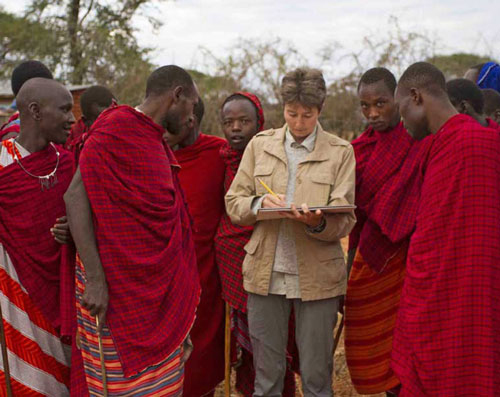
Artist Alison Nicholls sketching in a Maasai homestead in Tanzania
Teaching guests to sketch wildlife in Africa is the best job I’ve ever had. We stay in game reserves, sketch on our morning and evening drives, have amazing wildlife encounters, do daytime watercolor workshops, and laugh a lot. The safaris generally end far too soon.
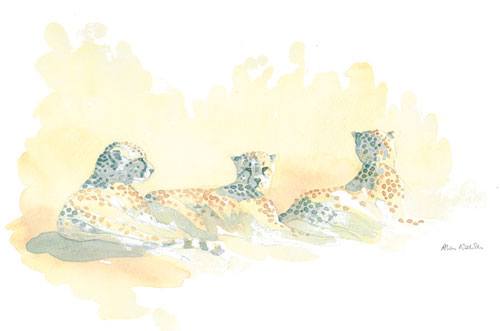
“Cheetah Trio” Watercolor Field Sketch, 14” x 11”
Sharing my love of field sketching and the African bush with people from all over the world is a privilege. While teaching, I’m also replenishing my own mental library of images which will feature in my studio paintings.
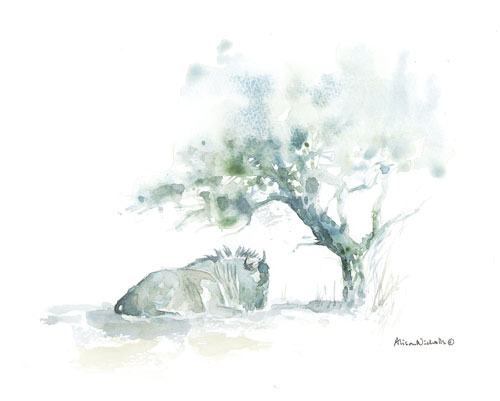
“Wildebeest in Shade” Watercolor Field Sketch, 10” x 8”
I began sketching from life while living in Botswana and Zimbabwe in southern Africa. My husband and I spent a lot of our free time in the bush, camping and traveling in the region.
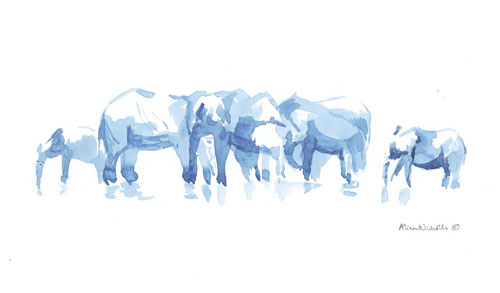
“Elephants at Water” Watercolor Field Sketch, 14” x 11”
Gradually I found myself sketching wildlife rather than landscapes. Along the way I tried different mediums until I settled on pencil and pen sketches. Watercolor is added later, purely from memory and imagination.
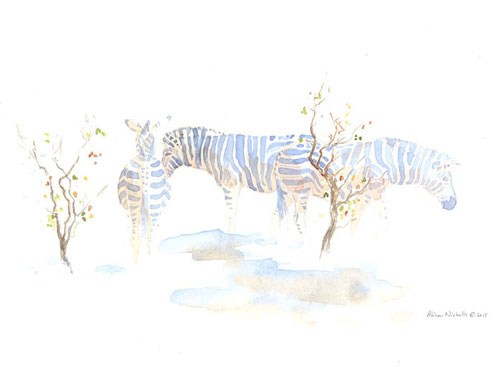
“Zebra in Mopane” Watercolor Field Sketch, 14” x 11”
Field sketching gave me opportunities to visit conservation organizations. I was able to sketch on site, learn about their work, and understand the complex issues faced by rural African communities.
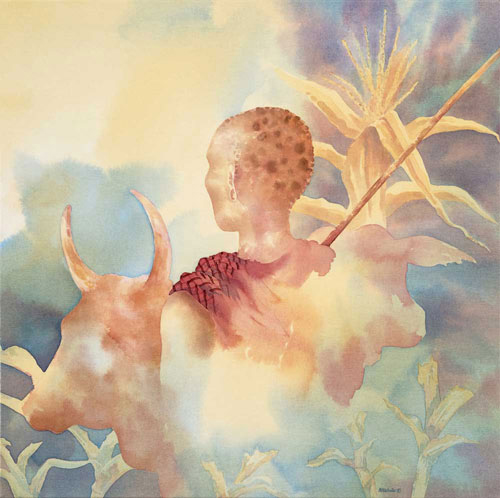
“Maize Maze” Fluid Acrylic on Canvas, 28” x 28”
I began sketching people too (ensuring that they received copies of the sketches) and created an ongoing series of conservation-themed paintings, like Maize Maze. Using art to depict complex conservation issues, like the clash of pastoralism and farming in rural Tanzania, is not always easy. But doing so gives my art layers of meaning, as well as layers of color.
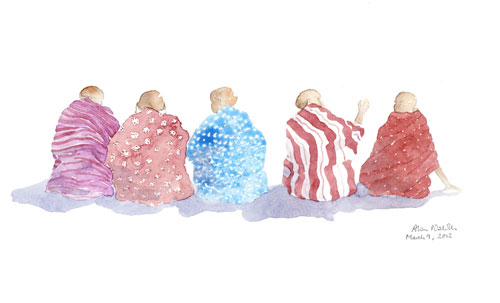
“Maasai Mamas” Watercolor Field Sketch, 14” x 11”
My conservation-themed exhibits, lectures, field sketches and studio paintings raise awareness and funds for the organizations I visit. Recently, I was delighted when one of the organizations I support, African People & Wildlife in Tanzania, invited me to join their International Advisory Council.
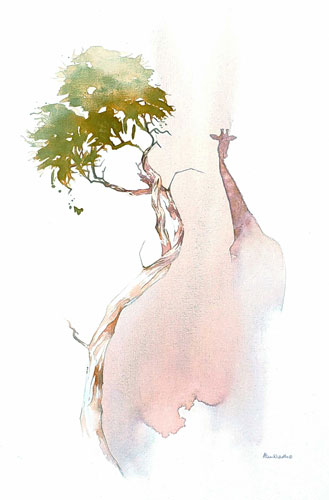
“Shepherd’s Tree and Giraffe” Acrylic on Canvas, 16” x 24”
Field sketches are also the inspiration for my studio paintings. I may take an animal from one field sketch and combine it with a tree shape from another sketch, as happened with Shepherd’s Tree and Giraffe. I create multiple thumbnail sketches to decide on an interesting composition.
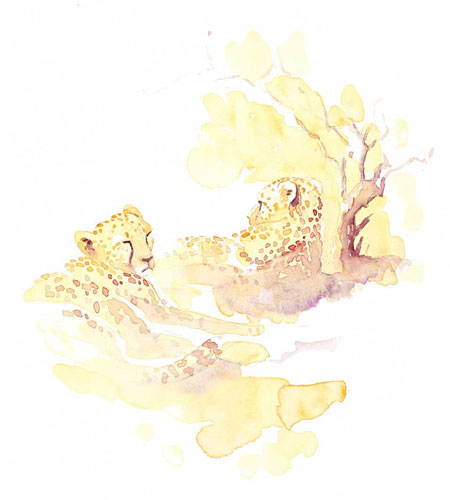
“Restful” Watercolor Field Sketch, 14” x 11”
I use multiple washes of fluid acrylic on my watercolor canvas to both obscure and reveal the subject of my painting. I build up layers of light, dust, and heat, and use my limited color palette to indicate the time of day or mood of the piece. Areas of “quiet space” in my work are extremely important. They balance the detail and leave room for interpretation and imagination.
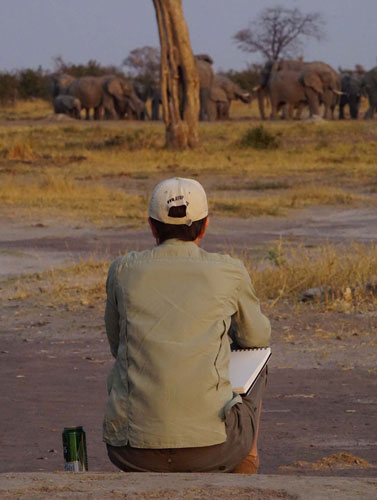
Artist Alison Nicholls sketching elephants in Botswana
Although it may sound like a cliché, learning to sketch in the field really has changed both my art and my life.
Artist Alison Nicholls invites you to follow her on Instagram, Facebook and the organization African People & Wildlife.


Good drawing is always a joy to see–what gorgeous field sketches. They would reproduce perfectly as giclee prints–hope you are already offering these. Best wishes, and thanks for the beauty.
Hi James, thanks so much for your lovely comment. Drawing is so important isn’t it? And yes, I do offer limited edition prints of my sketches! 😊 Alison